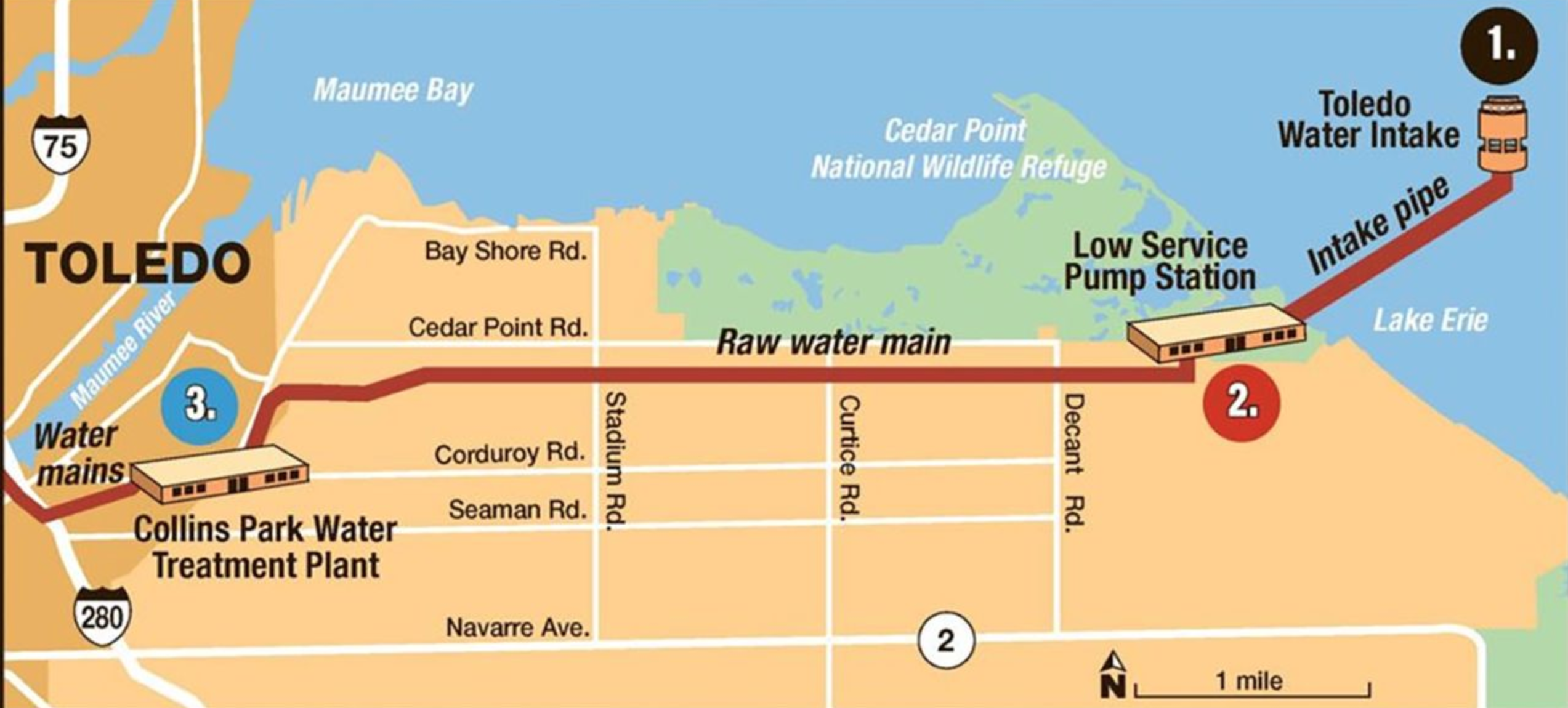
Hi all…I have come across an important paper for drinking water professionals which was just published in the journal ‘Applied and Environmental Microbiology’. The title may suggest that this is a difficult to understand topic with potentially no real-world relevance but it answers critically important questions about microcystin (e.g. MC-LR) occurrence that water providers have had for decades (i.e. why dissolved toxins may or may not be associated with cyanobacterial blooms)! [Note that phage/phages are viruses that specifically ‘infect’ bacteria, including cyanobacteria, in this case Microcystis spp.]
The study reports that “viral attack on cHABs may contribute to changes in community composition during blooms, as well as bloom decline, yet loss of bloom biomass does not eliminate the threat of cHAB toxicity. Rather, it may increase risks to the public by delivering a pool of dissolved toxin directly into water treatment utilities when the dominating Microcystis spp. are capable of producing microcystins. Detecting, characterizing, and quantifying the major cyanophages involved in lytic events will assist water treatment plant operators in making rapid decisions regarding the pool of microcystins entering the plant and the corresponding best practices to neutralize the toxin.” This comes with the caveat that treatment which can ‘neutralize the toxin’ is actually available in a given plant and that best practices, specifically for toxins, have been established.
With the dramatic increase in easier-to-use molecular technologies it may be possible to employ cyanophage testing onsite in drinking water treatment plants in the not-too-distant future. One substantial problem that remains is being aware that blooms are occurring and/or that toxin is present in the vicinity of a plant’s intake (or in raw water storage reservoirs).
Bill
_________________________________________________
Dissolved Microcystin Release Coincident with Lysis of a Bloom Dominated by Microcystis spp. in Western Lake Erie Attributed to a Novel Cyanophage
Katelyn M. McKindles, Makayla A. Manes, Jonathan R. DeMarco, Andrew, McClure, R. Michael McKay, Timothy W. Davis and George S. Bullerjahn
Appl. Environ. Microbiol. October 2020 86:e01397-20; Accepted manuscript
posted online 28 August 2020, doi:10.1128/AEM.01397-20
https://aem-asm-org.proxy.lib.uwaterloo.ca/content/86/22/e01397-20
ABSTRACT
“Western Lake Erie (Laurentian Great Lakes) is prone to annual cyanobacterial harmful algal blooms (cHABs) dominated by Microcystis spp. that often yield microcystin toxin concentrations exceeding the federal EPA recreational contact advisory of 8 μg liter−1. In August 2014, microcystin levels were detected in finished drinking water above the World Health Organization 1.0 μg liter−1 threshold for consumption, leading to a 2-day disruption in the supply of drinking water for >400,000 residents of Toledo, Ohio (USA). Subsequent metatranscriptomic analysis of the 2014 bloom event provided evidence that release of toxin into the water supply was likely caused by cyanophage lysis that transformed a portion of the intracellular microcystin pool into the dissolved fraction, rendering it more difficult to eliminate during treatment. In August 2019, a similar increase in dissolved microcystins at the Toledo water intake was coincident with a viral lytic event caused by a phage consortium different in composition from what was detected following the 2014 Toledo water crisis. The most abundant viral sequence in metagenomic data sets was a scaffold from a putative member of the Siphoviridae, distinct from the Ma-LMM01-like Myoviridae that are typically documented to occur in western Lake Erie. This study provides further evidence that viral activity in western Lake Erie plays a significant role in transformation of microcystins from the particulate to the dissolved fraction and therefore requires monitoring efforts from local water treatment plants. Additionally, identification of multiple lytic cyanophages will enable the development of a quantitative PCR toolbox to assess viral activity during cHABs.”





